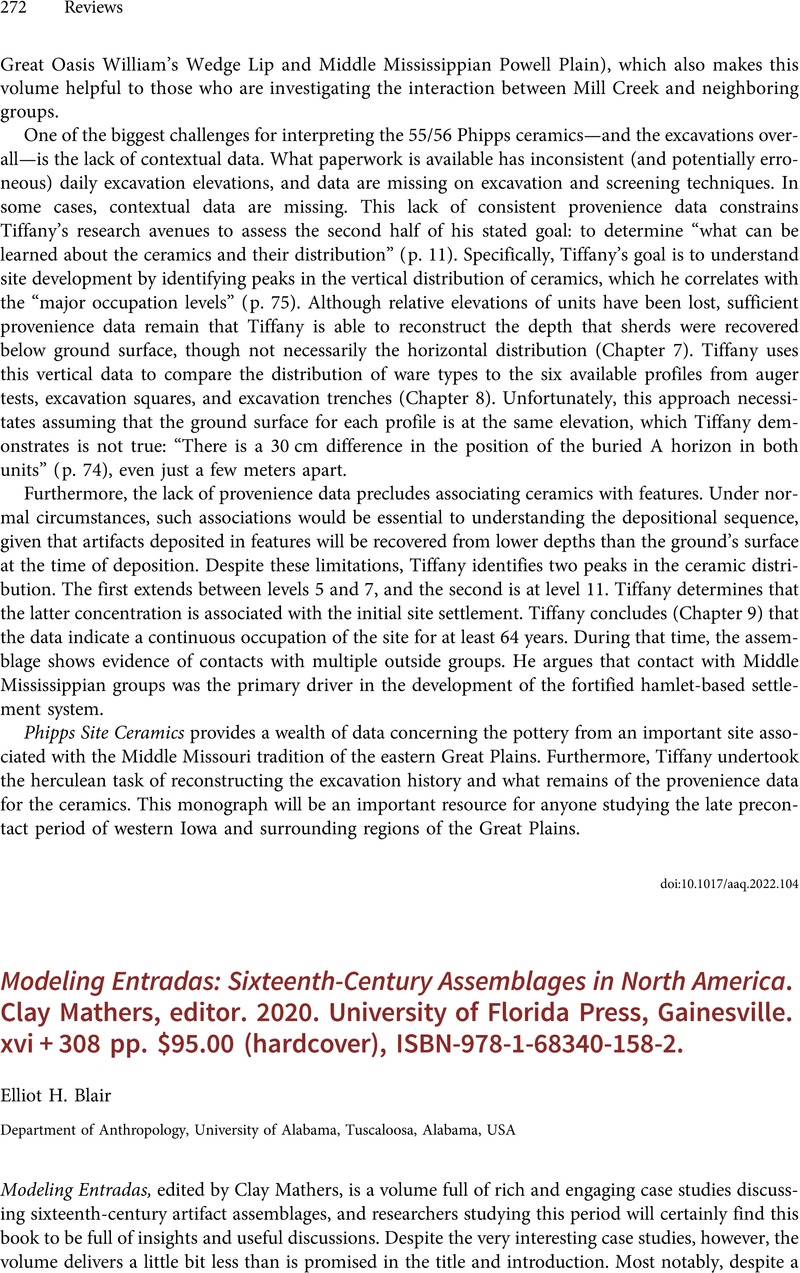No CrossRef data available.
Article contents
Modeling Entradas: Sixteenth-Century Assemblages in North America. Clay Mathers, editor. 2020. University of Florida Press, Gainesville. xvi + 308 pp. $95.00 (hardcover), ISBN-978-1-68340-158-2.
Review products
Modeling Entradas: Sixteenth-Century Assemblages in North America. Clay Mathers, editor. 2020. University of Florida Press, Gainesville. xvi + 308 pp. $95.00 (hardcover), ISBN-978-1-68340-158-2.
Published online by Cambridge University Press: 07 December 2022
Abstract
An abstract is not available for this content so a preview has been provided. Please use the Get access link above for information on how to access this content.

- Type
- Review
- Information
- Copyright
- Copyright © The Author(s), 2022. Published by Cambridge University Press on behalf of the Society for American Archaeology


